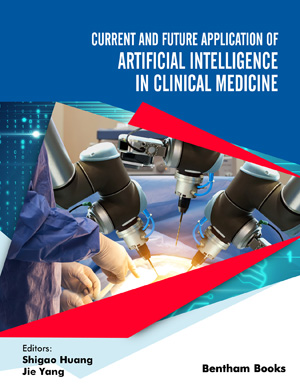Abstract
Background: 18F-FDG PET/CT imaging represents the most important functional imaging method in oncology. European Society of Medical Oncology and the National Comprehensive Cancer Network guidelines defined a crucial role of 18F-FDG PET/CT imaging for local/locally advanced breast cancer. The application of artificial intelligence on PET images might potentially contributes in the field of precision medicine.
Objective: This review aims to summarize the clinical indications and limitations of PET imaging for comprehensive artificial intelligence in relation to breast cancer subtype, hormone receptor status, proliferation rate, and lymphonodal (LN)/distant metastatic spread, based on recent literature.
Methods: A literature search of the Pubmed/Scopus/Google Scholar/Cochrane/EMBASE databases was carried out, searching for articles on the use of artificial intelligence and PET in breast tumors. The search was updated from January 2010 to October 2021 and was limited to original articles published in English and about humans. A combination of the search terms "artificial intelligence", “breast cancer”, “breast tumor”, “PET”, “Positron emission tomography”, “PET/CT”, “PET/MRI”, “radiomic”," texture analysis", “machine learning”, “deep learning” was used.
Results: Twenty-three articles were selected following the PRISMA criteria from 139 records obtained from the Pubmed/Scopus/Google Scholar/Cochrane/EMBASE databases according to our research strategy. The QUADAS of 30 full-text articles assessed reported seven articles that were excluded for not being relevant to population and outcomes and/or for lower level of evidence. The majority of papers were at low risk of bias and applicability. The articles were divided per topic, such as the value of PET in the staging and re-staging of breast cancer patients, including new radiopharmaceuticals and simultaneous PET/MRI.
Conclusion: Despite the current role of AI in this field remains still undefined, several applications for PET/CT imaging are under development, with some preliminary interesting results particularly focused on the staging phase that might be clinically translated after further validation studies.
Keywords: Breast cancer, radiomics, artificial intelligence, positron emission tomography, nuclear medicine, cancer patients.
[http://dx.doi.org/10.1002/cam4.2711] [PMID: 31769230]
[http://dx.doi.org/10.1097/MNM.0000000000001019] [PMID: 30925542]
[http://dx.doi.org/10.3390/cancers13061249] [PMID: 33809057]
[http://dx.doi.org/10.1186/s13550-018-0466-5] [PMID: 30594961]
[http://dx.doi.org/10.1186/s13550-021-00751-4] [PMID: 33492478]
[http://dx.doi.org/10.3390/cancers13122928] [PMID: 34208197]
[http://dx.doi.org/10.1007/s00259-020-04684-3] [PMID: 31982990]
[http://dx.doi.org/10.1136/bmj.g7647] [PMID: 25555855]
[http://dx.doi.org/10.7326/0003-4819-155-8-201110180-00009] [PMID: 22007046]
[http://dx.doi.org/10.52586/4960] [PMID: 34590460]
[http://dx.doi.org/10.1007/s00259-017-3770-9] [PMID: 28711994]
[http://dx.doi.org/10.18632/oncotarget.25762] [PMID: 30112113]
[http://dx.doi.org/10.1155/2019/4507694] [PMID: 30930700]
[http://dx.doi.org/10.3390/cancers11101444] [PMID: 31561604]
[http://dx.doi.org/10.1007/s12282-020-01202-z] [PMID: 33454875]
[http://dx.doi.org/10.1038/s41598-017-01524-7] [PMID: 28484211]
[http://dx.doi.org/10.1007/s00259-017-3641-4] [PMID: 28188325]
[http://dx.doi.org/10.1007/s00259-021-05270-x] [PMID: 33674891]
[http://dx.doi.org/10.1007/s00259-021-05492-z] [PMID: 34374796]
[http://dx.doi.org/10.1038/s41523-018-0078-2] [PMID: 30131973]
[http://dx.doi.org/10.2967/jnumed.117.199935] [PMID: 29301932]
[http://dx.doi.org/10.1111/tbj.13032] [PMID: 29602210]
[http://dx.doi.org/10.1007/s00259-019-04313-8] [PMID: 30915523]
[http://dx.doi.org/10.1038/s41598-020-77875-5] [PMID: 33273490]
[http://dx.doi.org/10.3389/fonc.2021.601053] [PMID: 34249671]
[http://dx.doi.org/10.1016/j.ejrad.2020.108940] [PMID: 32171909]
[http://dx.doi.org/10.4414/smw.2022.w30123] [PMID: 35098599]
[http://dx.doi.org/10.1097/MNM.0000000000001500] [PMID: 35022378]
[http://dx.doi.org/10.1007/s00259-015-3088-4] [PMID: 26025244]
[http://dx.doi.org/10.2967/jnumed.118.223495] [PMID: 30733322]
[http://dx.doi.org/10.1007/s12149-021-01688-3] [PMID: 34716873]
[http://dx.doi.org/10.1155/2014/248505] [PMID: 24757667]
[http://dx.doi.org/10.1007/s00259-014-2933-1] [PMID: 25339524]
[http://dx.doi.org/10.1371/journal.pone.0094017] [PMID: 24722644]
[http://dx.doi.org/10.3389/fonc.2021.759007] [PMID: 34722313]














